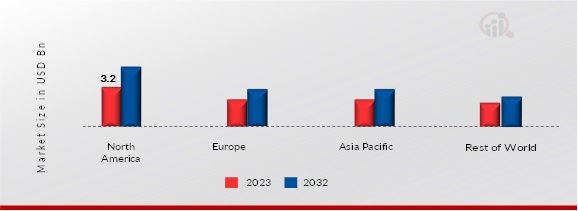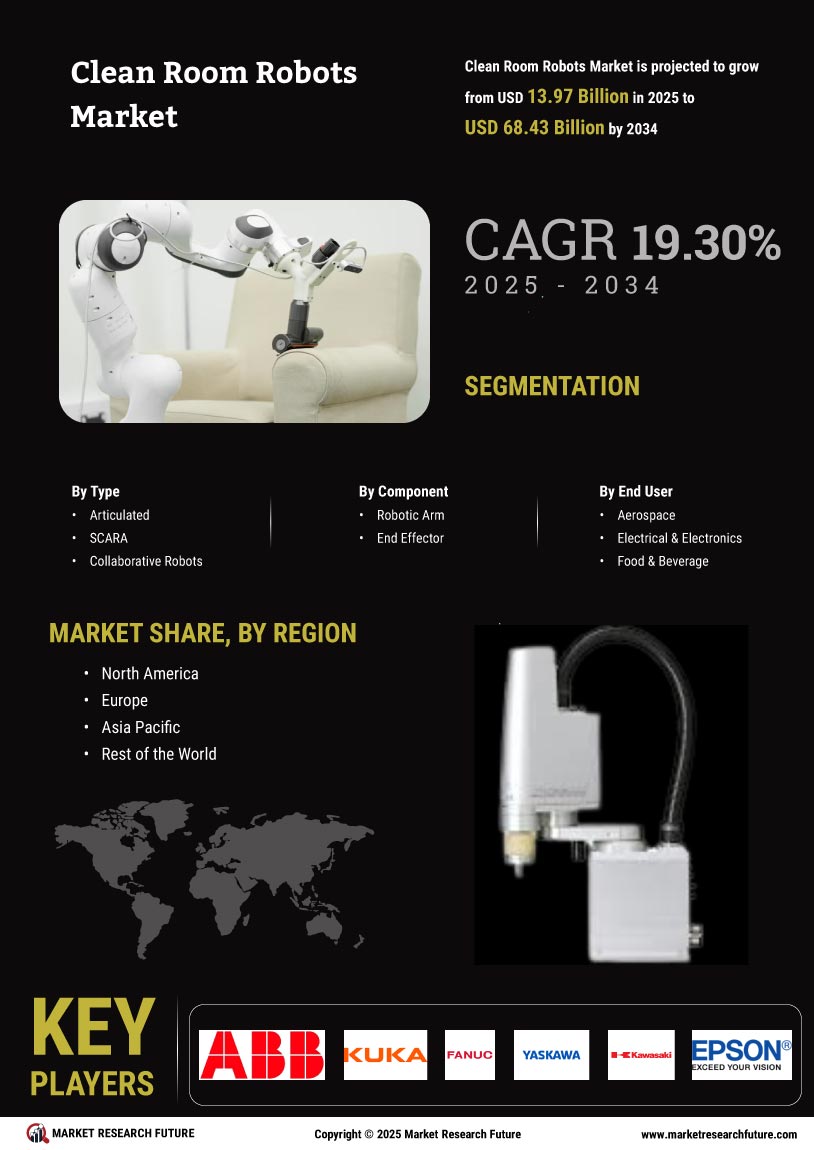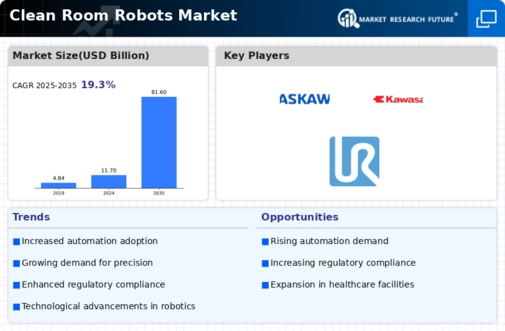By region, the study provides the market insights into North America, Europe, Asia-Pacific, and the Rest of the World. North America region will dominate the Clean Room Robots market, as will pharmaceuticals, electronics, and automotive. North America captured the largest market share in the clean room robots market due to several factors. The region is home to a large number of key players in industries such as pharmaceuticals, electronics, and automotive, driving the demand for clean room robots. Additionally, stringent regulatory standards regarding cleanliness and product quality further bolster the adoption of clean room automation solutions in North America.
Moreover, significant investments in research and development contribute to the region's dominance in the market.
Further, the major countries studied in the market report are the US, Canada, Germany, France, the UK, Italy, Spain, China, Japan, India, Australia, and South Korea.
Figure 3: Clean Room Robots Market Share By Region 2023 (USD Billion)

Source: Secondary Research, Primary Research, Market Research Future Database and Analyst Review
Europe Clean Room Robots market accounts for the second-largest market share, particularly in industries such as automotive. Europe captured the second-largest market share in the clean room robots market due to several factors. The region boasts a robust manufacturing sector, particularly in industries such as automotive, electronics, and pharmaceuticals, which heavily rely on clean room automation. Additionally, Europe has stringent regulations regarding cleanliness and product quality, driving the adoption of clean room robots. Moreover, technological advancements and a strong focus on innovation contribute to Europe's prominence in the market.
Further, the German Clean Room Robots market held the largest market share, and the UK Clean Room Robots market was the fastest growing market in the European region.
The Asia-Pacific Clean Room Robots Market is expected to grow at the fastest CAGR from 2024 to 2032. The Asia Pacific region is experiencing the highest compound annual growth rate (CAGR) in the clean room robots market due to several factors. These include rapid industrialization, particularly in countries like China, Japan, and South Korea, leading to increased adoption of automation solutions. Additionally, the growing demand for electronics, pharmaceuticals, and automotive products in the region drives the need for clean room robots. Moreover, favorable government initiatives and investments in manufacturing infrastructure further stimulate market growth in Asia Pacific.
Moreover, China’s Clean Room Robots market held the largest market share, and the Indian Clean Room Robots market was the fastest growing market in the Asia-Pacific region.















Leave a Comment